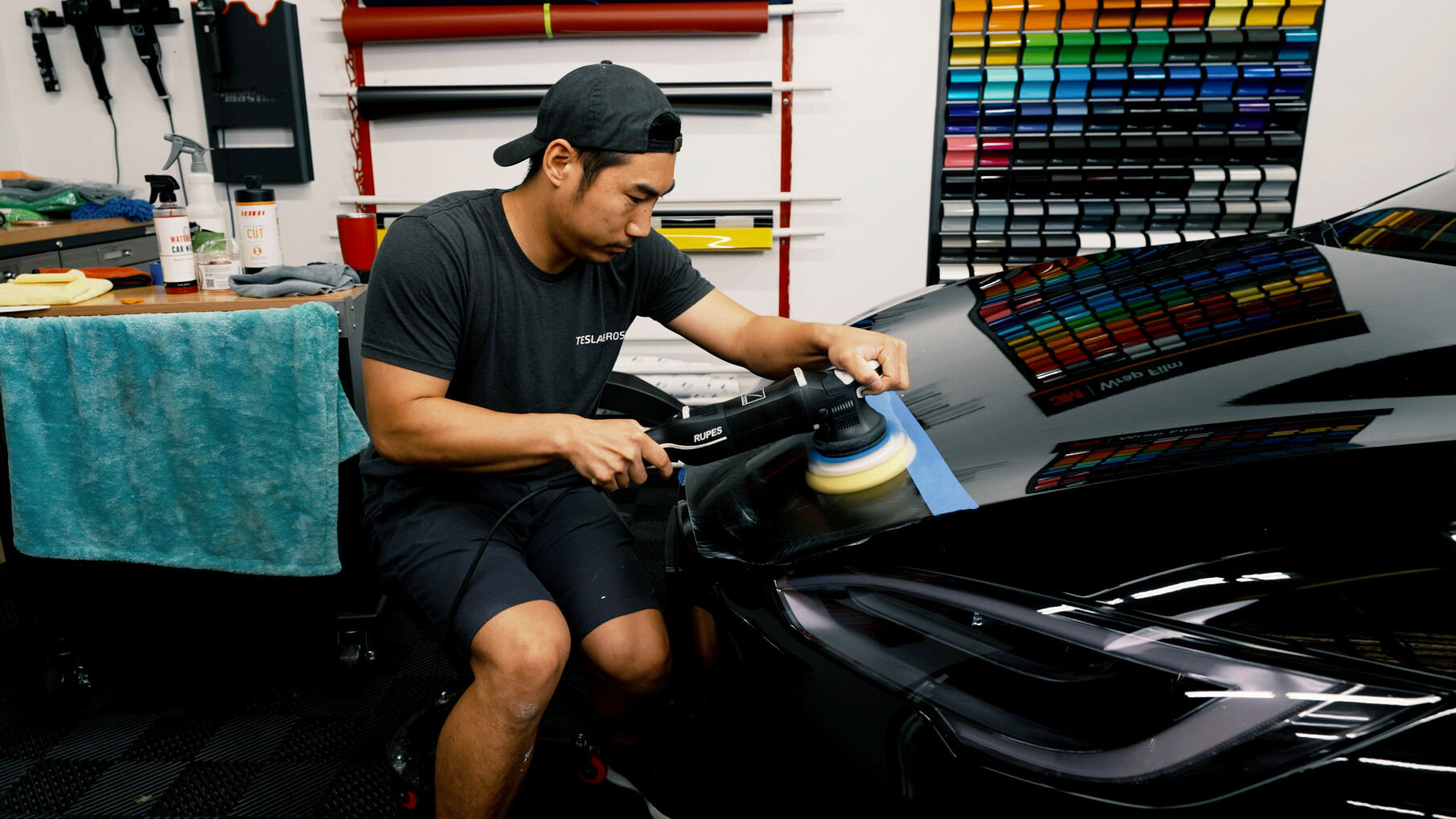Paint correction and paint touch up tend to be confused with one another. So, hopefully this will help differentiate the two, so you can decide what you really need. Let’s start with the anatomy of your car’s paint. You have the substrate (or the metal) on the bottom, then the primer, next the paint layer, and the clear coat on top.
Paint Correction
Your car’s paint will inevitably end up with minor, clear coat scratches from everyday use, etches from bird poop, and maybe some swirls from improper cleaning. Watch our video on how to use the two bucket method to get the most out of your car wash. Also, stay away from automatic washes! Your paint also dulls overtime from oxidation.
To fix these minor blemishes and bring the shine back, you paint correct by polishing down the top clear coat to go past the damage.
The steps to paint correct in a nutshell are:
- Wash your car
- Clay bar
- Dry car
- Polish off the clear coat to the point of damage
- Buff the car
- Apply a sealant to protect
Think of paint correction as reversing the damage and making it look like you just bought the car all over again. However, this is a limited process because you only have so much that you can work with before getting to the paint! So, it’s very important to apply a sealant, wax, ceramic coating or PPF afterwards to keep it protected. The best option is PPF, because it protects from the most – including rocks – whereas the others aren’t as heavy duty.
Also important to note is that even though it can be DIY-able, it does require a high skill level to do this, because there’s a very small margin of error. You definitely don’t want to accidently polish or sand past the clear coat.
Paint Touch Up
Paint touch up on the other hand, is for filling deep scratches – most often from rock chips. These are scratches that have dug into the paint and the primer, and you can see the metal. The idea is to seal the crevices, then even out the surface by sanding and polishing.
There are DIY paint repair kits you can buy, or you can get it professionally done. It’s totally up to you. The most important thing to keep in mind is that you want to apply the least amount of paint possible, so you can level it easier. If there is too much, it will be really hard to sand off and get even with the car again.
The steps to do a touch up in a nutshell are:
- Wash your car
- Clay bar
- Dry car
- Fill the damaged area with paint (You can use a toothpick, small brush, syringe, or an applicator pen like this.)
- Let the area dry
- Level it
- Repeat if needed
Don’t do this on a place where it’s actually dented the metal, because you’ll need to first fill it in with a special kind of putty or even replace the panel. You also don’t want to do it on rust, because this means you need a new panel.
Have high expectations? It won’t be perfect. Especially if you don’t have the exact paint match. You may be able to see the fix from 1 foot away, but not from 5 feet away.
After getting your paint fixed up in either of these two ways, you might be tempted to put ceramic coating over it to make it nice and shiny, BUT this won’t protect your paint. You can keep it in great condition by putting PPF on it instead. It’s a thick film that protects from rock chips and scratches. We have videos and blogs about these options, so check them out!





